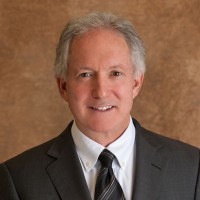Corporate history is full of bold leaders who take extreme measures to maximize profits. Some of these figures are remembered as visionaries, while others earn infamous nicknames. “Chainsaw Al” Dunlap and “Chainsaw Elon” Musk share a reputation for making drastic cuts, restructuring businesses, and leaving a lasting impact—whether for better or worse. But how do they compare, and what can we learn from their leadership styles?
Table of Contents
| Sr# | Headings |
|---|---|
| 1 | Who Was “Chainsaw Al”? |
| 2 | The Rise of “Chainsaw Elon” |
| 3 | Similarities in Leadership Styles |
| 4 | Key Differences Between Al Dunlap and Elon Musk |
| 5 | Corporate Restructuring: Efficiency or Chaos? |
| 6 | The Impact on Employees |
| 7 | Public Perception and Media Coverage |
| 8 | Investor Reactions and Market Response |
| 9 | Success vs. Controversy: How History Remembers Them |
| 10 | Lessons for Future Leaders |
| 11 | The Ethics of Ruthless Leadership |
| 12 | Case Studies: Sunbeam vs. Twitter/X |
| 13 | Innovation vs. Cost-Cutting |
| 14 | Where Are They Now? |
| 15 | Final Thoughts on Chainsaw Leadership |
Who Was “Chainsaw Al”?
Al Dunlap earned his infamous nickname due to his aggressive cost-cutting tactics. He was known for taking struggling companies, slashing jobs, and boosting short-term profits—often at the expense of long-term stability. His tenure at Sunbeam ended in scandal, proving that cutting too deep can lead to collapse.
The Rise of “Chainsaw Elon”
Elon Musk, the billionaire entrepreneur behind Tesla and SpaceX, adopted a similar approach after acquiring Twitter (now X). Mass layoffs, rapid restructuring, and a relentless pursuit of efficiency earned him comparisons to Dunlap. However, Musk’s track record of innovation sets him apart.
Similarities in Leadership Styles
Both figures share an unapologetic approach to leadership, favoring rapid decision-making, aggressive restructuring, and a willingness to disregard traditional corporate norms. Their ability to command attention and dominate headlines also adds to their mystique.
Key Differences Between Al Dunlap and Elon Musk
While Dunlap focused solely on financial performance, Musk has a broader vision that includes technological innovation. Dunlap left a trail of failed companies, whereas Musk has successfully built industry-changing businesses.
Corporate Restructuring: Efficiency or Chaos?
Mass layoffs and structural changes can lead to streamlined operations, but they also risk demoralizing employees and reducing productivity. The balance between efficiency and chaos determines long-term success.
The Impact on Employees
Both leaders have been criticized for their lack of empathy toward employees. Dunlap was notorious for firing thousands without warning, while Musk’s layoffs at Twitter disrupted workplace stability overnight.
Public Perception and Media Coverage
The media played a major role in shaping their reputations. Dunlap was painted as a ruthless villain, while Musk, despite criticism, retains a dedicated fanbase that views him as a genius.
Investor Reactions and Market Response
Markets often respond positively to cost-cutting measures, at least in the short term. However, Dunlap’s aggressive approach eventually led to a loss of investor confidence, while Musk’s long-term vision keeps Tesla and SpaceX attractive to investors.
Success vs. Controversy: How History Remembers Them
Dunlap’s legacy is mostly negative, remembered for his corporate failures. Musk’s legacy is still unfolding, but his influence on multiple industries suggests he will be remembered more as a disruptor than a destroyer.
Lessons for Future Leaders
What can modern CEOs learn from Dunlap and Musk? The key takeaway is that leadership requires more than just cost-cutting—it demands vision, strategy, and ethical decision-making.
The Ethics of Ruthless Leadership
Is it justifiable to sacrifice jobs for the sake of corporate efficiency? The ethical debate surrounding mass layoffs and aggressive leadership remains relevant in today’s corporate world.
Case Studies: Sunbeam vs. Twitter/X
A closer look at Sunbeam’s downfall versus Twitter’s transformation under Musk highlights the risks and rewards of extreme leadership strategies.
Innovation vs. Cost-Cutting
Dunlap focused on financial manipulation, while Musk uses cost-cutting as a means to fuel ambitious projects. This distinction explains why Musk continues to thrive where Dunlap failed.
Where Are They Now?
Dunlap faded into obscurity after his downfall, while Musk remains at the forefront of global innovation. Their diverging fates offer valuable insights into leadership longevity.
Final Thoughts on Chainsaw Leadership
Extreme leadership styles generate both admiration and criticism. While some view them as necessary disruptors, others see them as reckless and harmful. The debate continues.
FAQs
1. Why was Al Dunlap called “Chainsaw Al”?
Al Dunlap earned the nickname due to his aggressive job-cutting tactics and cost-reduction strategies, which often prioritized short-term gains over long-term stability.
2. Why is Elon Musk compared to Al Dunlap?
Musk’s rapid layoffs and restructuring at Twitter/X drew comparisons to Dunlap, as both leaders embraced aggressive cost-cutting measures to reshape their companies.
3. What happened to Al Dunlap after Sunbeam?
After a financial scandal led to his downfall, Dunlap largely disappeared from the business world and is remembered as a cautionary tale of corporate excess.
4. How does Elon Musk’s leadership differ from Dunlap’s?
While both use aggressive restructuring, Musk focuses on innovation and long-term vision, whereas Dunlap primarily aimed for short-term financial performance.
5. Is ruthless leadership effective?
It can deliver short-term results but often comes at the cost of employee morale, company culture, and long-term stability. Ethical leadership is key to sustained success.
